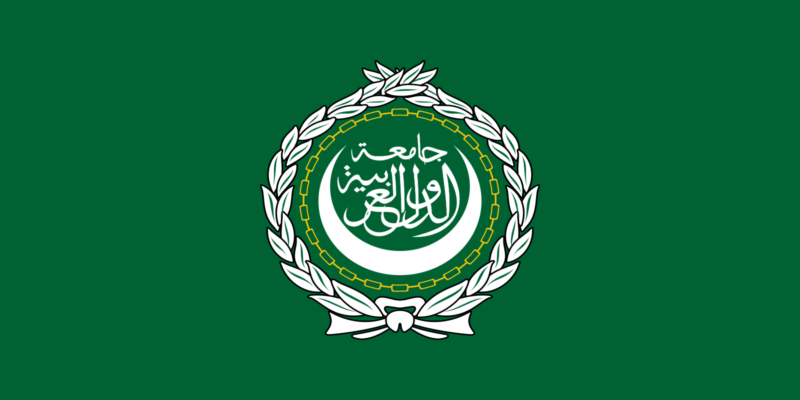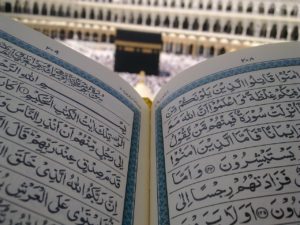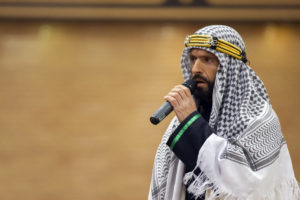Discover the Secrets of the Arabic Language
Arabic is an old and fascinating language. There are so many versions of it today, understanding the complexity of this language can be a lot. But, it’s also one of the most widely spoken languages in the world. So, it’s definitely worth learning about it. And perhaps you’ll even want to try learning Arabic yourself.
This is a collection of every important fact, figure, and rule that makes Arabic what it is today. Discover its roots and history, and understand more of its grammar Here’s everything about the Arabic language you need to know.
Basic Facts About the Arabic Language
Arabic is the 5th most widely spoken language in the world. There are 422 million Arabic speakers worldwide. 293 million of these people hold Arabic as their native language. It’s the official language of 22 countries.
Algeria |
Bahrain |
Chad |
Comoros |
Djibouti |
Egypt |
Iraq |
Jordan |
Kuwait |
Lebanon |
Libya |
Mauritania |
Morocco |
Oman |
Qatar |
Saudi Arabia |
Somalia |
Sudan |
Syria |
Tunisia |
UAE |
Yemen |
As you can see, it’s a massively important language in the world. In fact, Arabic is one of the six official languages of the United Nations. Since the Quran was written in Arabic, it’s also the liturgical language of 1.7 billion Muslims.
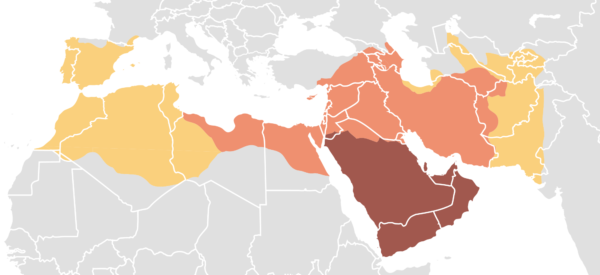
Dialects and Varieties of Arabic
There are three forms of Arabic you need to know about. And, at the end of this post, you can also find out which form you should prioritize when you’re learning Arabic.
Classical Arabic
This is the literary language of Arabic, and it’s also the language of the Quran. It’s held as the most perfect form of Arabic, and it’s been relatively unchanged for over a millennium.
Modern Standard Arabic (MSA)
This is the modern form of literary Arabic. It’s basically an adaptation of Classical Arabic for modern times. This is the language of books, TV, education, and formal situations. Every Arabic speaker knows this form of Arabic. But, it’s not used for everyday speech.
Arabic Dialects
This is the form of Arabic locals use for everyday language. There are around 30 distinct Arabic dialects worldwide, but of course, these differ regionally too. The most important and widely spoken dialects of Arabic are:
- Egyptian: This is the most widely understood type of Arabic. When you’re learning Arabic as a second language, Egyptian Arabic is the kind you’ll learn. It’s spoken by 50 million people in Egypt. Thanks to Egyptian media, most films and TV shows use this type of Arabic.
- Algerian: 22 million people in Algeria speak this colloquial Arabic.
- Moroccan/Maghrebi: Along with French, Arabic is very popular in Morocco. Around 19.5 million people speak it.
- Sudanese: spoken in Sudan by about 19 million people
- Saidi: You may have noticed that only half of Egypt’s population speak Egyptian Arabic. Around 19 million Egyptians speak the Saidi version of Arabic.
- North Levantine: widely spoken in Lebanon and Syria by about 15 million people.
- Mesopotamian: 14 million people of Iran, Iraq and Syria share this form of colloquial Arabic.
- Najdi: spoken by 10 million people in Saudi Arabia, Iraq, Jordan and Syria.
What Language Family Is Arabic In?
Arabic is a Semitic language. This means that it’s related to Hebrew, Aramaic, and Phoenician.
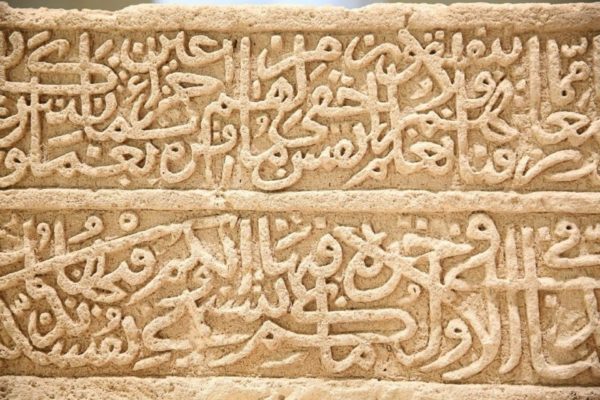
History of the Arabic Language
Arabic is one of the oldest languages in the world. Its roots date back thousands of years. And its history is just as fascinating as the rest of the language. Here are the most important events that shaped Arabic into the language it is today.
Old Arabic
In the 13th to 11th century BCE, there were a number of Semitic languages that related to Arabic in Arabia. But, these weren’t Arabic yet. The earliest written evidence of Arabic came from Aramaic inscriptions in the 6th-4th century BCE. But, this was only a list of names and didn’t reveal much of the language yet. But, Aramaic shows Arabic’s influence.
The first written piece of evidence that’s definitely Arabic came from the 1st century BCE. This is called the Ein Avdat inscription. It was written in Aramaic and Nabataean script. How we see written Arabic developed from the Nabataean writing system.
As you can see, Arabic comes from a fascinating and old background. But, the real fun of its history comes from the Classical Arabic period.
Classical Arabic
Before Islam, there were numerous dialects of Arabic spoken across the peninsula. The only common languages these tribes shared was written. This was called a koine. It was a compromise between the different Arabic dialects. And they used the koine to write poetry.
In the 7th century CE, the Quran was written. At the time, there were seven distinct Arabic dialects: Quraishi, Tamimi, Hatheel, Azad, Rabee’ah, Hawazen, and Sa’d bin Bakr. The difference between them was only in pronunciation, not in grammar. Although the Quran was written in all of them, the Quraishi became the most dominant dialect.
As the Islamic Conquests spread the Arabic language across the Middle East, Northern Africa, and Asia, more and more people spoke Arabic. There was a growing need to standardize the language. So, in an effort to make Arabic more universal, they made the script more practical, introduced new vocabulary, and they set the grammatical rules.
Neo-Arabic and Middle Arabic
Despite this language revolution, new dialects of Arabic were born. And not even from the standardized Classical Arabic. These grew from pre-Islamic dialects and Arabic koine. The new dialects were also heavily influenced by the original conquered language the people spoke before.
-
- Levant and Mesopotamia dialects were influenced by Aramaic
- Maghrebi dialects were influenced by Berber
- Egyptian dialects were influenced by Coptic
We call the first few centuries of these new dialects Neo-Arabic.
Another issue with standardized Classical Arabic was that not everyone could write it. So, very often, people wrote with a mixture of Classical Arabic and Neo-Arabic. This is called Middle Arabic. So, Middle Arabic doesn’t refer to a time period. Instead, it’s the middle ground between the two versions of Arabic that existed in this time.
Modern Arabic
As time went on, Neo-Arabic dialects evolved. But, literary Classical Arabic remained the same. After Napoleon arrived in the Middle East, the Arabic language got closer to the Western world. And this called for another revolution of the language.
In the early 20th century, regional academies of the Arabic language reformed the grammar and introduced new vocabulary again. And this is how Modern Standard Arabic (MSA) was born.

Diglossia in the Arabic Language
As mentioned before, Arabic locals understand Modern Standard Arabic, but they don’t speak it. They speak their regional dialect in everyday conversations. This is a fascinating case of diglossia in the Arabic language. Diglossia means that a community uses two different languages in different situations. It’s a coexistence of languages.
So, and Arabic speaking native would use their dialect to talk to others. But, they would read the news, watch TV, and hear formal speeches in Modern Standard Arabic. A lot of learning resources and children’s TV shows are also in MSA, because it’s important that every Arabic speaker understands it. Even if they don’t use it daily.
Can Arabic Dialects Understand Each Other?
There are a lot of dialects of Arabic. How well these dialects can understand each other varies. It depends on geography and exposure. Middle Eastern regions understand each other quite well. For them, understanding Maghrebi (Moroccan) dialects is the real challenge. But, again, it depends.
Whenever Arabic dialects have trouble understanding each other, they switch to MSA.
Another way to bridge the difference in dialect for modern speakers is to use the “white dialect”. This uses features that are common to most dialects but avoids features limited to specific dialects. This is essentially a modern Arabic koine.
The Arabic Alphabet and Writing System
Arabic is written from left to right. Left-handed people rejoice! This is a big change for Arabic learners. Arabic letters also imitate handwriting in their design. Most letters join to each other, but others remain disjoined. You can join letters with a short-form connector at the beginning or the middle of the word, or a long-form connector for the end or for individual letters.
There are 28 letters in the Arabic alphabet. These are:
ا A
Alif |
بB
Ba |
تT
Ta |
ثTha
Theh |
ج J
Jim |
حH
Ha |
خKH
Kha |
دD
Dal |
ذTH
Dhal |
رR
Ra |
زZ
Za |
سS
Sin |
ش SH
Shin |
ص S
Sad |
ضDa
D’ad |
طDH
Dha |
ظTha
Dh’a |
ع A
‘Ain |
غGH
Ghain |
فF
Feh |
قQ
Qaf |
كK
Kaf |
لL
Lam |
مM
Mim |
نN
Nun |
هH
Ha’a |
و W
Waw |
يY
Yah |
Arabic script is an abjad. This means that there are only consonants in the Arabic alphabet. You need to guess the vowels as you’re reading written Arabic. (Actually, if you want to be technical Arabic is an almost-abjad. The alphabet does contain a vowel “ا Alif”, and you may see long vowels written down. But, saying that Arabic is an abjad sounds much cooler).
To make reading Arabic out loud easier, you can use harakat. These are extra diacritic marks to show where the vowels are. These are only used when the pronunciation matters, like formal speeches or language learning resources.
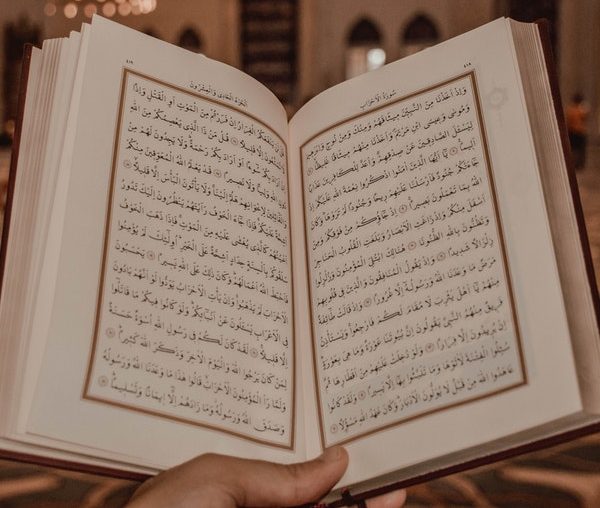
Phonology and How Arabic Sounds
Arabic is often said to have a harsh sound. That’s because there are a number of hard consonants in the Arabic pronunciation. (And since the Arabic alphabet is all consonants, who’s surprised?). Some letters in Arabic don’t exist in English pronunciation. Some of the harder ones are: kha (خ), qaf (ق), ha (ح), and ghain (غ). The latter sounds a little bit like a rolled French r.
Arabic also has emphatic consonants. These are harder to pronounce because you need to obstruct your airflow to form these sounds. There are four of these consonants in Arabic: s (even though there’s a normal “s” sounds in Arabic too), t, d, and z.
Morphology and How You Create Arabic Words
You need two components to create Arabic words: you need 3 root letter (sometimes 4), and you need a template. The template is a fixed vowel pattern that you fill with the three consonants. It looks something like this:
_ _ 1 _ 2 _ 3 _
Let’s look at an example:
- Template: ma12a3
- Root letters: d, kh, l
- Word: madkhal أدخل – to come in, enter
The template can tell you a lot about the word. For example, this template shows that a verb is taking place at a specific time. But, it’s also a way to make the abjad aspect of Arabic easier. If you know the most common templates in Arabic, guessing which vowel you need to use is very straightforward.
Arabic Grammar
Since Arabic seems like a very complicated language, learners often think that mastering Arabic grammar will be impossibly hard. But, that’s not the case. Learning Arabic grammar is much easier than you think. The rules are very easy to understand, and there aren’t a lot of exceptions. Let’s take a look at some of the most basic Arabic grammar rules.

Arabic Verbs
Creating and conjugating Arabic verbs goes through the same process of root letters and templates. The templates reveal the tense, gender, and number of the verb. And the root letters provide the core meaning. Here’s an example:
- Template: 1a2a3a
- Root letters: kh – r – j
- Word: kharaja خرج – he exited
We know from the template that it’s a past tense third person masculine singular conjugation.
There are only three tenses in Arabic grammar:
- Present
- Past
- Future
Actually, the future isn’t even a full tense. If you want to say something in the future tense, you need to use the present tense, and add a future marker in front of the verb. These are:
- sa-: if you’re referring to the near future
- sawfa: if the action’s happening in the distant future
Word Order in the Arabic Language
The Arabic sentence structure is a great example of how diglossia works in the community. Modern Standard Arabic is a VSO (verb-subject-object) language by default. But, when there’s a pronoun in the sentence, the word order changes into SVO (subject-verb-object).
On the other hand, Arabic dialects are a little different. They’re mainly SVO (subject-verb-object) in terms of word order. So, when you’re learning Arabic, it matters which variety you speak.
Cases in Arabic Language Grammar
One of the unique aspects of Arabic is how cases affect grammar. There are three cases in the Arabic language: nominative, accusative, and genitive. Nouns have special endings to show their case and their role in the sentence. And the adjective is also inflected to agree with the noun.
Case endings aren’t used at the end of a sentence, only when the word is followed by something. The form at the end of the sentence without a case ending is called a pausal form.
Usually, case endings aren’t a part of Modern Standard Arabic, so learners don’t have to stress about them. You can see them often in official texts and prepared speeches.
What Form of Arabic Should I Learn?
Since there are a lot of dialects, learners are often confused with which to start with. Should Arabic learners study Modern Standard Arabic or a dialect?
Well, because Modern Standard Arabic is understood in the entire Arabic speaking world, it’s a really good start. You can find a lot of learning materials in this form of Arabic. Mastering reading and writing is best with Modern Standard Arabic.
But, if your main focus is fun and communication, you can go ahead and learn a dialect of Arabic. Usually, the Egyptian dialect is the most widespread, but any region that you like is good. You can also mix your MSA studies with pronunciation practice of a specific dialect.
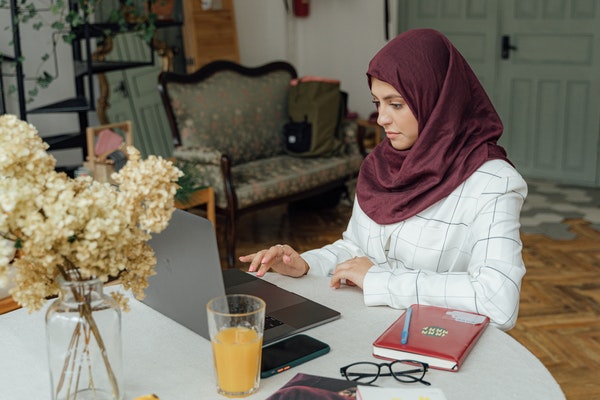
Is Arabic a Hard Language to Learn?
Arabic is ranked as a Category V language. This means that the US Foreign Service Institute (FSI) believes that English native speakers would have a considerably harder time learning Arabic than other languages.
But, harder is not the same as hard. You can easily learn Arabic with the right language learning methods. And no government body can calculate with your motivation, drive, and enthusiasm. So, while the FSI estimates 2200 hours of study for Arabic fluency, you can actually learn the language faster.
Learn the Arabic Language with the Best App
The best way to learn the Arabic language is to look at the most commonly used words and phrases. That’s how real Arabic locals speak. Well, they speak with a dialect, but they all understand Modern Standard Arabic with the same expressions. So, if you want a language course that contains exactly that, you need to download OptiLingo.
OptiLingo is a collection of the most often used Arabic vocabulary. You won’t waste your time learning unnecessary words with this app. OptiLingo also makes you pronounce these phrases in Arabic. So, you start your journey to fluency that much faster. You’ll achieve better results with Arabic when you study with OptiLingo!

